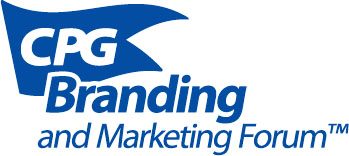Tell Your Brand’s Stories
Isn’t it funny how many marketers flock to use the terms ‘antioxidant,’ ‘fat free’, and other, similar ubiquitous terms? Or how so many companies rush to enlist in the latest ‘green’ organization just to put a certified logo on its products’ labels (since over 55% of consumers look for a product with a ‘green connotation’)? This is especially curious since research has proven that more people are more influenced by the colors and design of packaging versus alleged product claims clearly spelled out on the label. For instance, more people are influenced and apt to believe a claim based on an earthy design, versus a certifiable emblem. This brings us to solution number one!
1) Be honest
Be sure not to mislead consumers. The term ‘unscented’ is a major culprit of this, and often misleading; unscented does NOT always mean that fragrances or perfumes have not been added. This is very crucial at this time when the government is definitely cracking down on label claims!
1) Don’t clutter your label!
Less really can be more. If a company clutters its package with testimonials, reasons to purchase the product, the package looks like a pity plea and sometimes leaves customers running. Simple equates to elegance. A customer feels more comfortable in purchasing the product when he or she feels empowered to decide for himself or herself. The average consumer only glances at your product for 2-3 seconds (and is more frequently enticed initially by the picturesque quality and texture versus the copy). Make a statement with your design that will intrigue customers in this very short time span.
2) Does your message accurately reflect your campaign?
Does the tone of the message and product photo match? All thematic elements of a company, product, slogan, and package graphics should work together harmoniously and be representative of each other.
3) Use a specialty label to set you apart.
- With all of the current regulations surrounded required copy on labels, space is definitely limited. For an exciting spin on putting advertising copy on your labels, try a QR Code that will link users to additional information!
- Label materials can also set you apart. Film labels are clear, less expensive, thin substrates. They are elegant looking and the “no label look” is very striking. The substrates that Vibrant Graphics prints on are 100% recyclable, which is appealing to customers! Another specific type of material that definitely sets products apart is the use of holographic material.
- If you have a clear glass or plastic container, two-sided labels look very classy, and are unique. For example, on the opposite side of the product that the label is adhered to, it is possible to see through the container, and read the other (back) side of the label.
- Different shapes of labels are also eye-catching, which is possible by die-cutting!
4) Design with location in mind.
- It is the age of personalization, after all. Since digital printing does not require expensive plates and is a web-to-print based printing solution, this is extremely cost efficient way to conduct test-market segmentation. Digital printing offers increased personalization and allows the product distributor to include different messages on the product distributed in various regions. This is extremely valuable when different locations require different messages or have different labeling requirements.
- Another use of digital printing is when you would like to change the product label color, depending on region; colors have different connotations in different regions (such as green being correlated with religion in Ireland, or certain colors representing morality and in some cases immorality). Blue is currently considered the safest global color.
5) Make the label interactive.
Does your product have a story behind it? Tell it. Lots of products have clever and funny quips on the side or even under the cap like Snapple has! Think of a unique way to position your product or have your consumers interact with your product. Wheat Thins has a remarkable strategy of tying the consumer to the product!
